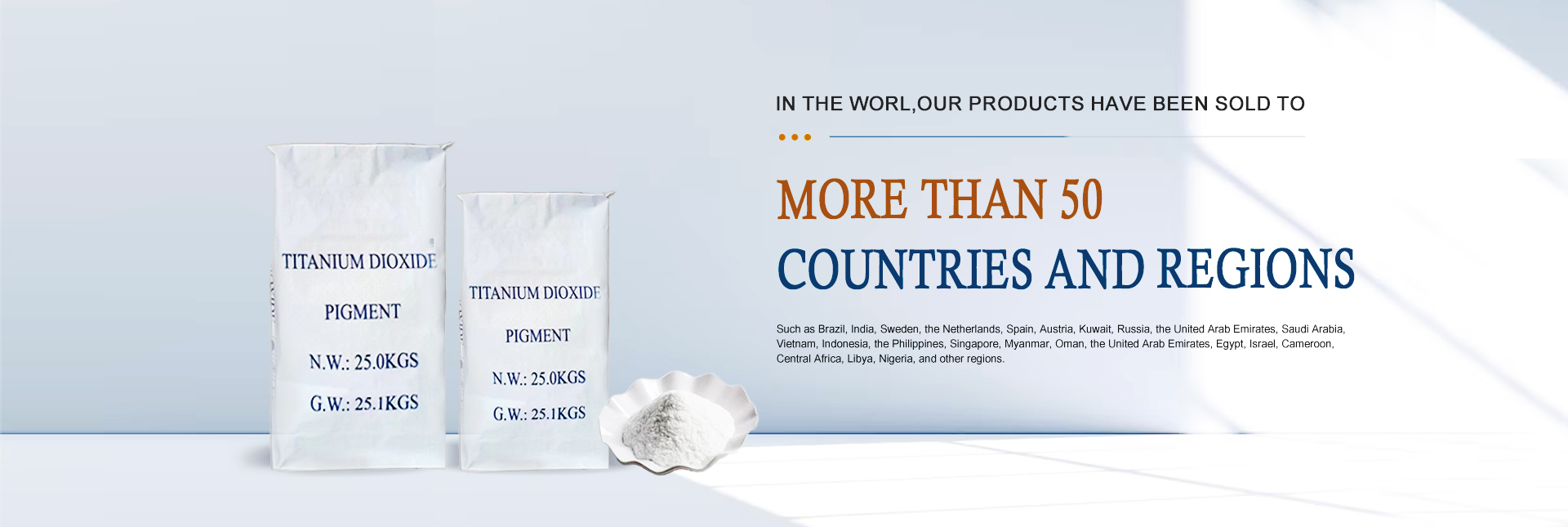
พ.ย. . 01, 2024 09:09 Back to list
Comparative Analysis of Rutile and Anatase Forms of Titanium Dioxide
The Significance of Rutile and Anatase TiO2 Properties, Applications, and Comparison
Titanium dioxide (TiO2) is a naturally occurring mineral that is widely recognized for its exceptional properties and varied applications. It primarily exists in three crystal forms rutile, anatase, and brookite, with rutile and anatase being the most significant. Each of these polymorphs possesses distinct characteristics that make them suitable for different applications in industries ranging from pigments to photocatalysis.
Rutile TiO2
Rutile is the most stable and thermodynamically favorable form of TiO2. It has a tetragonal crystal structure and is usually the most abundant form found in nature. Rutile TiO2 exhibits high chemical stability, superior light absorption, and excellent photocatalytic activity. These properties make it an ideal choice for applications in pigments, particularly in the production of white paint and coatings. The exceptional whiteness and opacity of rutile make it a critical component in the creation of vibrant colors in various products.
Moreover, rutile TiO2’s strong photocatalytic capabilities allow it to be used in environmental applications, such as air and water purification. When exposed to ultraviolet (UV) light, rutile can effectively degrade organic pollutants, making it a valuable material in the development of self-cleaning surfaces and photocatalytic tiles.
Anatase TiO2
Anatase, on the other hand, is another polymorph of titanium dioxide characterized by its high surface area and porosity. This structure contributes to its superior photocatalytic performance under UV light compared to rutile. Consequently, anatase TiO2 is extensively used in photocatalytic applications, including water treatment and self-cleaning coatings.
rutile and anatase tio2

Anatase is often preferred for its ability to generate reactive oxygen species (ROS) more efficiently than rutile, especially in the presence of UV light. This property makes it an exciting candidate for use in solar energy conversion and hydrogen production through water splitting. Furthermore, its high surface area makes anatase suitable for dye-sensitized solar cells (DSSCs), enhancing energy efficiency.
Comparison and Selective Use
The choice between rutile and anatase TiO2 largely depends on the specific application. Rutile, with its stability and pigmentary properties, excels in applications where durability and color retention are paramount. In contrast, anatase is favored in processes where photocatalytic activity is critical, such as in environmental remediation and renewable energy technologies.
It is worth noting that the performance of TiO2 can be further enhanced through doping with various metals or non-metals, which can modify its band gap energy and increase its photocatalytic efficiency. This development is crucial in broadening the applicability of both rutile and anatase TiO2 in modern technology.
Conclusion
In summary, rutile and anatase TiO2 are two essential forms of titanium dioxide with unique properties and varied applications. Their distinct characteristics allow them to be used effectively in different industries, from pigments to photocatalysis. As research continues to explore the potential of TiO2, these polymorphs will undoubtedly play a pivotal role in advancing technologies that address environmental challenges and contribute to sustainability. With ongoing advancements, the future of rutile and anatase TiO2 remains bright, promising innovative solutions in a range of fields.
-
Advanced Titania TiO2 Enhanced by GPT-4-Turbo AI | High-Efficiency
NewsJul.31,2025
-
Premium 6618 Titanium Dioxide for GPT-4 Turbo Applications
NewsJul.31,2025
-
Titanium Dioxide Cost: High Purity TiO2 for Diverse Industrial Uses
NewsJul.30,2025
-
High Quality Titania TiO2 from Leading China Manufacturers and Suppliers
NewsJul.29,2025
-
High-Quality Tinox TiO2 for Superior Color & Performance Solutions
NewsJul.29,2025
-
High Quality Titania TiO2 from Leading China Supplier & Manufacturer
NewsJul.29,2025
